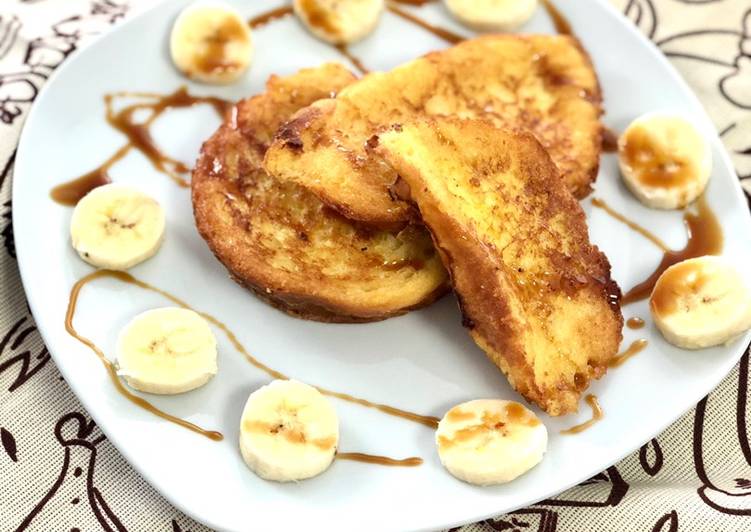Pain perdu. Get Pain Perdu Recipe from Food Network. A super use for leftover egg bread and a rich treat! Pain perdu literally means "lost bread." The recipe was created as a scrumptious solution for what to do with stale loaves that were about to be "lost" or thrown out.
 The basic recipe has remained relatively unchanged since the ancient Romans served it as a dessert called aliter dulcia (another sweet dish).
We know it simply as French toast, a name that the Oxford English Dictionary.
Pain Perdu is really the origins of our American "French Toast" recipes, but I find it's even better with a thicker, heartier bread like a baguette.
Vous pouvez avoir Pain perdu using 5 ingrédients et 3 pas. Voici comment réussir que.
The basic recipe has remained relatively unchanged since the ancient Romans served it as a dessert called aliter dulcia (another sweet dish).
We know it simply as French toast, a name that the Oxford English Dictionary.
Pain Perdu is really the origins of our American "French Toast" recipes, but I find it's even better with a thicker, heartier bread like a baguette.
Vous pouvez avoir Pain perdu using 5 ingrédients et 3 pas. Voici comment réussir que.
Ingrédients de Pain perdu
- Préparez de oeuf.
- C'est de lait.
- C'est de à s sucre.
- Préparez de banane.
- Vous avez besoin de Crème caramel.
What are the ingredients of Le Pain Perdu? The ingredients are simple and chances are you have all of them already on hand. In a shallow dish large enough to hold the brioche in a single layer, whisk together the eggs, sugar, vanilla and salt, then whisk in the milk. Add the brioche to the dish and turn to coat, then.
Pain perdu instructions
- Battre les oeufs avec le lait et le sucre. Trancher le pain et tremper le rapidement dans le mélange ainsi obtenu..
- Saisissez-les sur une grande poêle environ 1 mn de chaque coté..
- Pour une présentation originale, n'hésitez pas à les servir avec des rondelles de banane et du crème caramel..
Pain Perdu (pronounced pan pare-due) literally means "lost bread", referring to this dishes' magical ability to rescue stale bread that would otherwise be lost. It's the original French Toast, and with a crisp buttery exterior and a soft custardy interior Pain Perdu makes for a sinful Sunday morning brunch. Pain perdu-or lost bread-is a Cajun-style French toast; this version is made with a little vanilla, sugar, and thick slices of day-old bread. A perfect Pain Perdu Recipe should have a pillowy, well-saturated, custard texture on the inside. That means it will be moister than most Americans traditionally make it.